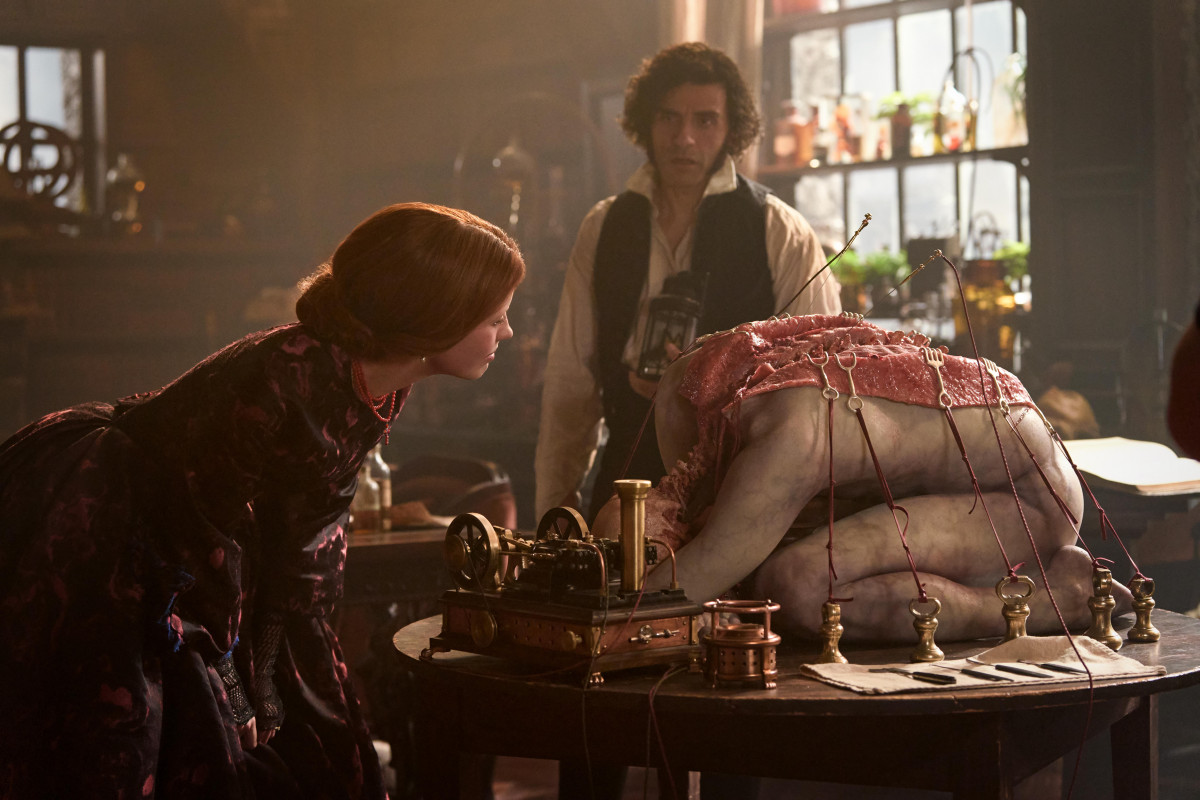(Image courtesy of IMDB. “Del Toro’s adaptation of ‘Frankenstein’ recontextualizes the pivotal novel.”)
Rosalie Pineda
Connector Staff
As Halloween was just around the corner, Guillermo del Toro’s “Frankenstein” began its limited theater release on October 17. Since it was also slated for a Netflix release on November 7, few theaters in Massachusetts were showing it. Those who did manage to secure a seat, however, were greeted with a gorgeous interpretation of Mary Shelley’s revolutionary novel.
In this movie, Victor Frankenstein (Oscar Isaac) is a cold, calculating scientist obsessed with reanimating the dead. Influenced by the death of his mother and the indifference of his father, he eventually succeeds by creating the Creature (Jacob Elordi). Constructed entirely from parts of other corpses, the Creature becomes Victor’s greatest triumph, but also his worst nightmare, as he deals with the consequences of bringing life into a world full of cruelty and conflict.
Not only is Victor suddenly thrust into a parental role, but he also has to contend with the feelings he has for his younger brother William’s (Felix Kammerer) fiancée, Elizabeth (Mia Goth). The movie takes us through both Victor’s and the Creature’s journeys as they search for meaning to their existences, and who or what truly drives them to keep living.
There are few monsters more recognized in pop culture than that of the Creature, or Frankenstein’s monster. Perhaps the most famous depiction of the monster is from “Frankenstein” (1931), played by Boris Karloff with the help of makeup artist Jack Pierce.
While certainly iconic, those who have read Mary Shelley’s novel acknowledge that this is far from the Creature’s original appearance. The screenplay was also heavily altered from the original story. Dozens of movie adaptations have been made since then, but none so far have truly captured most of the story beats from the novel.
This also goes for Del Toro’s “Frankenstein.” Del Toro takes his own artistic liberties with the source material in a way that some Shelley fans might find reductive. At the same time, it’s clear that Del Toro loves the original work, so the changes he’s made to the narrative are especially deliberate. Instead of a one-to-one retelling, he weaves a narrative that shone a brighter light on the themes of cyclical abuse, trauma, life, and death already present in Shelley’s work.
The visuals are where the movie truly shines. The set design is heavy with atmosphere and symbolism. Every frame was shot with careful consideration, down to the color palette. The gore also packs a punch, perhaps startling for those who may be faint of heart. There’s a balance of horror, beauty, and melancholy
Jacob Elordi’s portrayal of the Creature is particularly moving. His appearance is especially accurate to the book, albeit his experiences living under Victor and navigating the world on his own takes a very different turn. There’s an innocence and wonder to the Creature that is very seldom seen on the big screen. When the world is cruel to him, it tugs on your heartstrings. When it is kind to him, you cheer.
This may also be a downside to this movie. The writing at times can be quite on-the-nose, with characters stating the story’s themes in a way that feels unnecessary. The Creature can also be argued to have been written too sympathetically, while Victor was portrayed as the obvious villain. As such, novel fans who favor more of a morally gray Creature may not enjoy this version of the story.
The ending is also a point of contention. Without giving too much away, the end of this movie is much more hopeful than that of the original story. It’s up to the viewer to decide whether this is for the better or worse.
Overall, Del Toro’s “Frankenstein” is a beautifully refreshing adaptation with stellar performances. If fans can look past the changes and enjoy it for what it has to offer, this movie truly stands on its own legs.
Grade: A-




